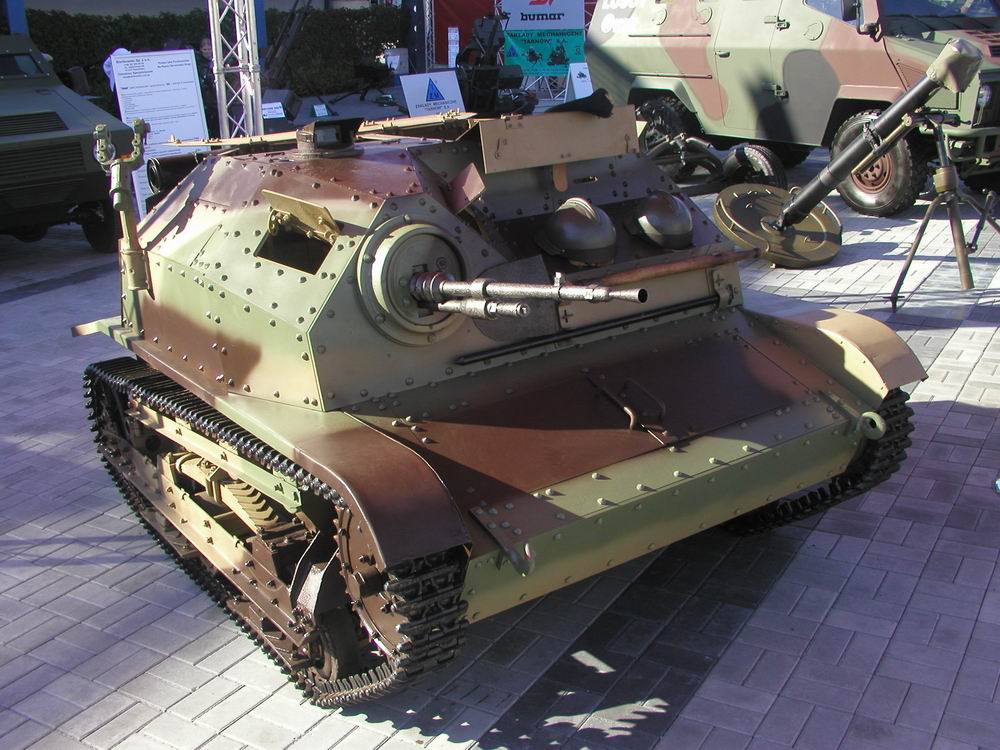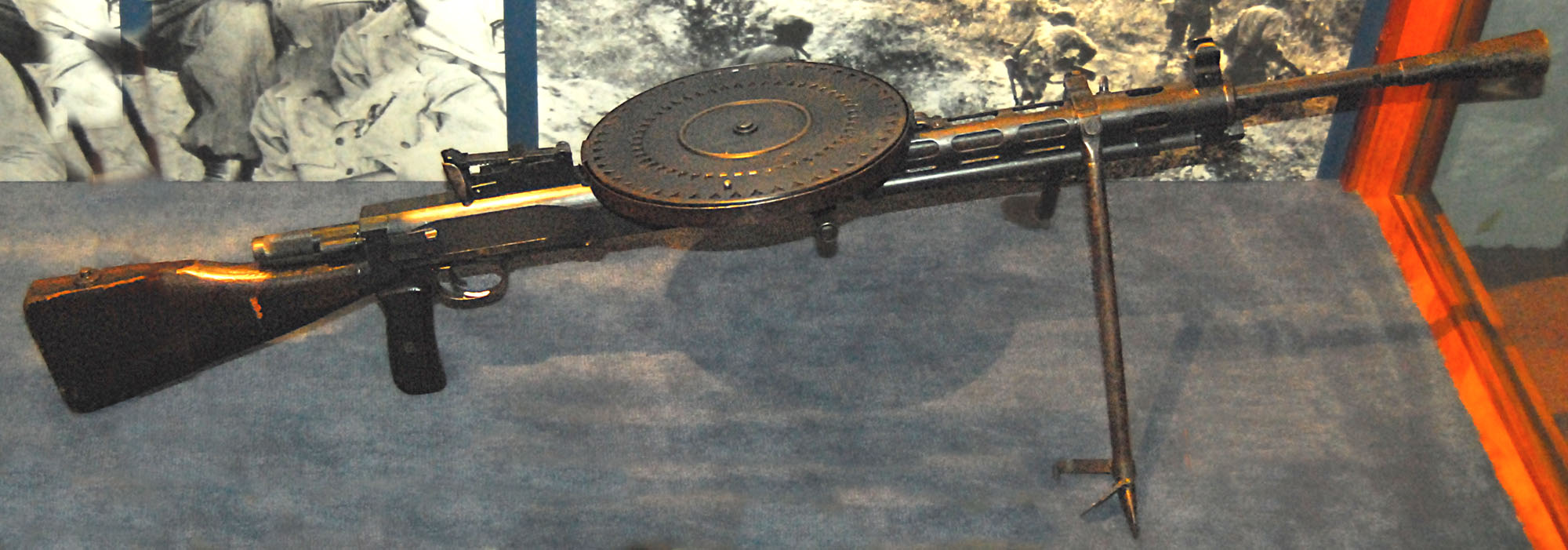|
PPG Tankette
The PPG tankette ( ru , ППГ; Подвижное пулемётное гнездо, ''PPG; Podvizhnoye pulemyotnoye gnezdo''; literally "mobile machine-gun nest"), also known by the prototype name ''Object 217'', was a Soviet tankette produced for fighting in the Winter War. Soviet infantry took huge losses attacking Finnish fortifications in the Winter War. To compensate, they sometimes assaulted them in armoured sledges towed by tanks. The PPG tankette was an attempt to create an infantry carrier to fulfil this role. About a hundred were produced at the Kirov Factory in Leningrad in 1940 and rushed to the front, but did not make it to Finland in time to be used in combat. The fate of the remaining PPGs is largely unknown, but there are rumours they were used in auxiliary roles in the USSR. The PPG tankette had partial armoured cover of thickness protecting the front and sides, for two infantrymen riding in a prone position. It was armed with two 7.62mm DT machine guns with ... [...More Info...] [...Related Items...] OR: [Wikipedia] [Google] [Baidu] |
Tankette
A tankette is a tracked armoured fighting vehicle that resembles a small tank, roughly the size of a car. It is mainly intended for light infantry support and scouting.T-27 Tankette (from the 'battlefield.ru' website, with further references cited. Accessed 2008-02-21.) Colloquially it may also simply mean a small tank. Several countries built tankettes between the 1920s and 1940s, and some saw limited combat in the early phases of . The vulnerability of their light armour, however, eventually led armies to abandon the concept with some exceptions such as the more modern German Wiesel (Weasel) series. ...
|
DT Machine Gun
The Degtyaryov machine gun (russian: Пулемёт Дегтярёвa Пехотный, Pulemyot Degtyaryova Pekhotny literally: "Degtyaryov's infantry machine gun") or DP-27/DP-28 is a light machine gun firing the 7.62×54mmR cartridge that was primarily used by the Soviet Union, with service trials starting in 1927, followed by general deployment in 1928. Besides being the standard Soviet infantry light machine gun (LMG) during World War II, with various modifications it was used in aircraft as a flexible defensive weapon, and it equipped almost all Soviet tanks in WWII as either a flexible bow machine gun or a co-axial machine gun controlled by the gunner. It was improved in 1943 producing the DPM, but it was replaced in 1946 with the RP-46 which improved on the basic DP design by converting it to use belt feed. The DP machine gun was supplemented in the 1950s by the more modern RPD machine gun and entirely replaced in Soviet service by the general purpose PK machine gun in t ... [...More Info...] [...Related Items...] OR: [Wikipedia] [Google] [Baidu] |
Tankette
A tankette is a tracked armoured fighting vehicle that resembles a small tank, roughly the size of a car. It is mainly intended for light infantry support and scouting.T-27 Tankette (from the 'battlefield.ru' website, with further references cited. Accessed 2008-02-21.) Colloquially it may also simply mean a small tank. Several countries built tankettes between the 1920s and 1940s, and some saw limited combat in the early phases of . The vulnerability of their light armour, however, eventually led armies to abandon the concept with some exceptions such as the more modern German Wiesel (Weasel) series. ...
|
Winter War
The Winter War,, sv, Vinterkriget, rus, Зи́мняя война́, r=Zimnyaya voyna. The names Soviet–Finnish War 1939–1940 (russian: link=no, Сове́тско-финская война́ 1939–1940) and Soviet–Finland War 1939–1940 (russian: link=no, Сове́тско-финляндская война́ 1939–1940) are often used in Russian historiographybr>В.Н. Барышников. От прохладного мира к Зимней войне. Восточная политика Финляндии в 1930–е годы. Санкт-Петербург, 1997.; О.Д. Дудорова. Неизвестные страницы Зимней войны. In: Военно-исторический журнал. 1991. №9.; Зимняя война 1939–1940. Книга первая. Политическая история. М., 1998. – ; ttp://www.otvaga2004.narod.ru/photo/winterwar/wwar1.htm М. Коломиец. Танки в Зимней войне 19 ... [...More Info...] [...Related Items...] OR: [Wikipedia] [Google] [Baidu] |
Kirov Factory
The Kirov Plant, Kirov Factory or Leningrad Kirov Plant (LKZ) ( rus, Кировский завод, Kirovskiy zavod) is a major Russian mechanical engineering and agricultural machinery manufacturing plant in St. Petersburg, Russia. It was established in 1789, then moved to its present site in 1801 as a foundry for cannonballs. The Kirov Plant is sometimes confused with another Leningrad heavy weapons manufacturer, ''Factory No. 185 (S.M. Kirov)''. Recently the main production of the company is Kirovets heavy tractors. History In 1868 Nikolay Putilov (1820-1880) purchased the bankrupt plant; at the Putilov Works the Putilov Company (a joint-stock holding company from 1873) initially produced rolling stock for railways. The establishment boomed during the Russian industrialization of the 1890s, with the work-force quadrupling in a decade, reaching 12,400 in 1900. The factory traditionally produced goods for the Russian government, with railway products accounting for more than ... [...More Info...] [...Related Items...] OR: [Wikipedia] [Google] [Baidu] |
Finland
Finland ( fi, Suomi ; sv, Finland ), officially the Republic of Finland (; ), is a Nordic country in Northern Europe. It shares land borders with Sweden to the northwest, Norway to the north, and Russia to the east, with the Gulf of Bothnia to the west and the Gulf of Finland across Estonia to the south. Finland covers an area of with a population of 5.6 million. Helsinki is the capital and largest city, forming a larger metropolitan area with the neighbouring cities of Espoo, Kauniainen, and Vantaa. The vast majority of the population are ethnic Finns. Finnish, alongside Swedish, are the official languages. Swedish is the native language of 5.2% of the population. Finland's climate varies from humid continental in the south to the boreal in the north. The land cover is primarily a boreal forest biome, with more than 180,000 recorded lakes. Finland was first inhabited around 9000 BC after the Last Glacial Period. The Stone Age introduced several differ ... [...More Info...] [...Related Items...] OR: [Wikipedia] [Google] [Baidu] |
Red Army
The Workers' and Peasants' Red Army (Russian: Рабо́че-крестья́нская Кра́сная армия),) often shortened to the Red Army, was the army and air force of the Russian Soviet Federative Socialist Republic and, after 1922, the Union of Soviet Socialist Republics. The army was established in January 1918. The Bolsheviks raised an army to oppose the military confederations (especially the various groups collectively known as the White Army) of their adversaries during the Russian Civil War. Starting in February 1946, the Red Army, along with the Soviet Navy, embodied the main component of the Soviet Armed Forces; taking the official name of "Soviet Army", until its dissolution in 1991. The Red Army provided the largest land force in the Allied victory in the European theatre of World War II, and its invasion of Manchuria assisted the unconditional surrender of Imperial Japan. During operations on the Eastern Front, it accounted for 75–80% of casual ... [...More Info...] [...Related Items...] OR: [Wikipedia] [Google] [Baidu] |
World War II Tankettes
In its most general sense, the term "world" refers to the totality of entities, to the whole of reality or to everything that is. The nature of the world has been conceptualized differently in different fields. Some conceptions see the world as unique while others talk of a "plurality of worlds". Some treat the world as one simple object while others analyze the world as a complex made up of many parts. In ''scientific cosmology'' the world or universe is commonly defined as " e totality of all space and time; all that is, has been, and will be". '' Theories of modality'', on the other hand, talk of possible worlds as complete and consistent ways how things could have been. ''Phenomenology'', starting from the horizon of co-given objects present in the periphery of every experience, defines the world as the biggest horizon or the "horizon of all horizons". In ''philosophy of mind'', the world is commonly contrasted with the mind as that which is represented by the mind. ''Th ... [...More Info...] [...Related Items...] OR: [Wikipedia] [Google] [Baidu] |
World War II Armoured Fighting Vehicles Of The Soviet Union
In its most general sense, the term "world" refers to the totality of entities, to the whole of reality or to everything that is. The nature of the world has been conceptualized differently in different fields. Some conceptions see the world as unique while others talk of a "plurality of worlds". Some treat the world as one simple object while others analyze the world as a complex made up of many parts. In ''scientific cosmology'' the world or universe is commonly defined as " e totality of all space and time; all that is, has been, and will be". '' Theories of modality'', on the other hand, talk of possible worlds as complete and consistent ways how things could have been. ''Phenomenology'', starting from the horizon of co-given objects present in the periphery of every experience, defines the world as the biggest horizon or the "horizon of all horizons". In ''philosophy of mind'', the world is commonly contrasted with the mind as that which is represented by the mind. ''Th ... [...More Info...] [...Related Items...] OR: [Wikipedia] [Google] [Baidu] |






